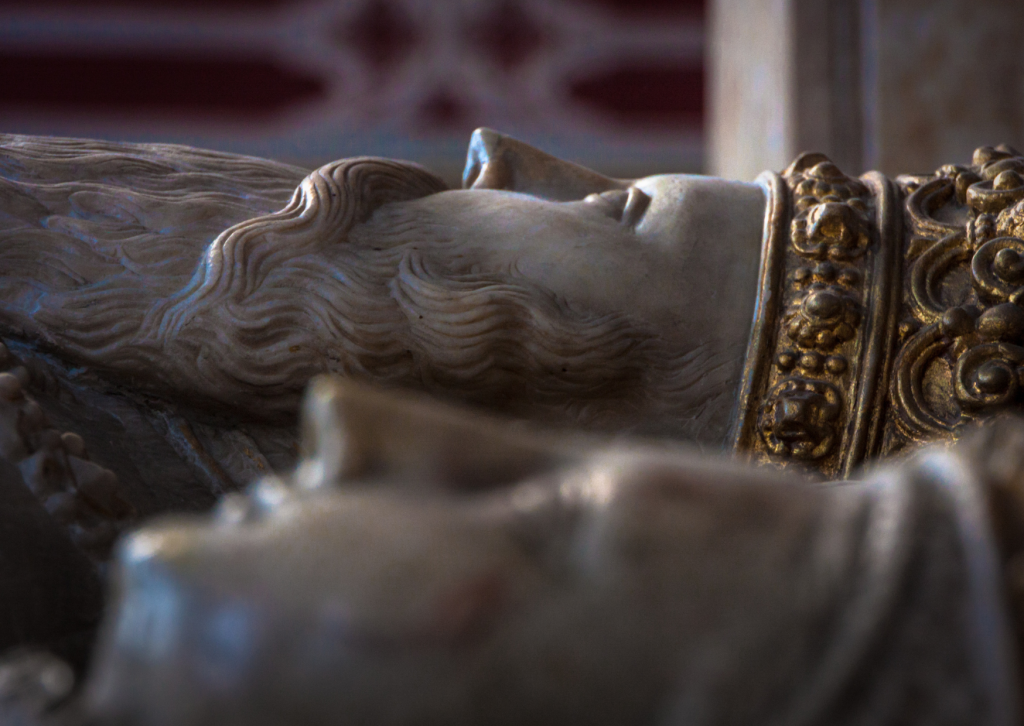Gustav Vasa, the King of Sweden from 1523 to 1560, is remembered as a transformative leader who enacted sweeping reforms that reshaped Swedish governance and society—including its territories in Finland. Through religious, administrative, and economic reforms, Gustav Vasa strengthened the monarchy and centralized authority, leaving a legacy that influenced Finnish society for centuries. For those studying for the Finnish citizenship test, understanding Gustav Vasa’s reforms offers insight into Finland’s historical relationship with Sweden and the enduring impact of these policies.
Gustav Vasa’s Rise to Power and His Vision for Reform
Gustav Vasa’s ascent to the Swedish throne marked the beginning of the Vasa dynasty and an era of consolidation and reform. After leading a successful rebellion against the Kalmar Union, which united Sweden, Norway, and Denmark, he became the first hereditary king of Sweden, ending the union in 1523. Gustav Vasa’s vision centered on a strong, centralized monarchy and economic independence for Sweden and its territories, including Finland, which was under Swedish rule at the time.
With the throne secure, Gustav Vasa implemented a series of reforms designed to consolidate power, strengthen the economy, and modernize the administration. His policies had significant and lasting effects on Finland, shaping Finnish society, governance, and culture in ways that are still evident today.
The Protestant Reformation and Religious Reform
One of Gustav Vasa’s most impactful reforms was his embrace of the Protestant Reformation, which fundamentally altered the religious landscape of both Sweden and Finland.
- Breaking Ties with the Catholic Church: In 1527, Gustav Vasa initiated the Reformation in Sweden, declaring Lutheranism as the state religion. By breaking away from the Catholic Church, he ended the Pope’s influence in Swedish and Finnish territories, allowing the monarchy to gain control over church properties and finances. This shift effectively transferred religious and economic power from the Church to the Crown.
- Confiscation of Church Assets: Gustav Vasa’s reforms included the confiscation of church lands, wealth, and other assets. This move provided the Crown with resources to finance the state and support the army. However, it also resulted in the loss of influence for the Catholic Church in Finland, affecting the role of religion in Finnish society.
- Establishment of the Lutheran Church: Under Gustav Vasa, the Lutheran Church became the official church in both Sweden and Finland, with Finnish clergy now trained in Lutheran theology. This change promoted literacy, as reading the Bible became essential, and marked the beginning of widespread Finnish education. The adoption of Lutheranism laid the foundation for Finnish religious practices and influenced Finland’s cultural identity.
Administrative and Military Reforms
Gustav Vasa’s reforms extended to the administrative structure of his kingdom, aiming to centralize power and create a more efficient government. These reforms strengthened royal authority in Finland and established governance systems that remained in place for centuries.
- Establishment of a Centralized Tax System: One of Gustav Vasa’s most enduring reforms was the introduction of a standardized taxation system. Taxes were now collected more systematically and efficiently, with records kept and accountability enforced. In Finland, this meant that peasants paid taxes directly to the Crown rather than to local nobility or the Church. This reform helped stabilize state finances and reduced the influence of local lords.
- Creation of Administrative Districts: To enforce royal authority in Finland, Gustav Vasa established administrative districts (slottslän), each managed by a royal governor who reported directly to the Crown. These governors were responsible for tax collection, law enforcement, and military recruitment, strengthening the monarchy’s control over Finnish territories. This system of centralized administration continued for centuries, providing the basis for Finland’s later local governance structures.
- Building of Fortifications: Gustav Vasa recognized the need for military fortifications to protect the kingdom, especially Finland, from external threats. He invested in the construction and reinforcement of castles and fortresses along Finland’s eastern borders, which were vulnerable to Russian incursions. These defenses not only safeguarded Finnish territories but also asserted Swedish dominance in the region.
Economic Reforms and the Promotion of Trade
Gustav Vasa’s economic reforms aimed to make Sweden and its territories more self-sufficient and economically prosperous. These policies promoted trade and industry, impacting Finland’s economy and society.
- Promotion of Agriculture and Forestry: Gustav Vasa encouraged agricultural development in Finland, clearing forests and converting lands for farming to increase food production and support the population. The expansion of agricultural practices strengthened Finland’s rural economy and laid the foundation for Finland’s future agricultural sector.
- Timber and Tar Production: Finland’s abundant forests became valuable resources under Gustav Vasa’s rule. Timber and tar were in high demand for shipbuilding, and these industries became central to the Finnish economy. Finland’s forests became a significant economic asset, providing exports that generated revenue for the Crown.
- Monopolization of Trade: Gustav Vasa established Crown monopolies over certain goods, including metals and minerals. In Finland, these monopolies affected trade and production, with the Crown controlling iron mines and other natural resources. These monopolies allowed the monarchy to control and benefit directly from Finland’s resources, creating a structured economy that contributed to the Crown’s wealth.
Long-lasting Effects of Gustav Vasa’s Reforms on Finland
Gustav Vasa’s reforms left a lasting legacy in Finland, impacting its governance, economy, and religious life for centuries. These reforms established systems and structures that continued under Swedish and later Russian rule, shaping the Finnish identity and way of life.
- Centralized Governance: Gustav Vasa’s creation of a centralized administration in Finland laid the groundwork for modern Finnish governance. The administrative districts and tax systems introduced under his rule persisted into later eras, helping to unify Finland and instilling a sense of order and accountability.
- Religious and Cultural Identity: The adoption of Lutheranism as the state religion had a profound impact on Finnish culture and identity. Lutheranism became an integral part of Finnish society, promoting literacy and education, shaping Finnish values, and influencing Finnish traditions. This religious shift provided the foundation for the Finnish Evangelical Lutheran Church, which remains the largest religious institution in Finland.
- Economic Foundations: Gustav Vasa’s emphasis on agriculture, forestry, and trade established the foundation of Finland’s economy, with a focus on natural resources that persists today. The timber and tar industries, as well as other resource-based sectors, have historically been pillars of the Finnish economy and continue to be significant contributors.
- Influence on Social Structure: Gustav Vasa’s reforms reduced the power of the nobility and the Church, strengthening the Crown’s relationship with the common people. This shift toward direct governance fostered a sense of connection between the monarchy and ordinary citizens, influencing Finland’s social structure and the development of its egalitarian values.
Gustav Vasa’s Legacy in Finnish History
Gustav Vasa’s reforms brought stability and modernization to Finland, strengthening its ties with the Swedish Crown and establishing structures that endured for centuries. His emphasis on centralized governance, economic growth, and religious reform played a foundational role in shaping Finnish society and governance. Gustav Vasa’s legacy in Finland is evident in the systems, values, and institutions that emerged from his reforms, contributing to the unique cultural and historical identity of Finland today.
For those studying for the Finnish citizenship test, understanding Gustav Vasa’s reforms offers a perspective on how Finland’s early governance, economy, and cultural identity were shaped. The influence of these reforms underscores Finland’s connection to Sweden, a connection that continues to be a part of Finnish history and identity.


